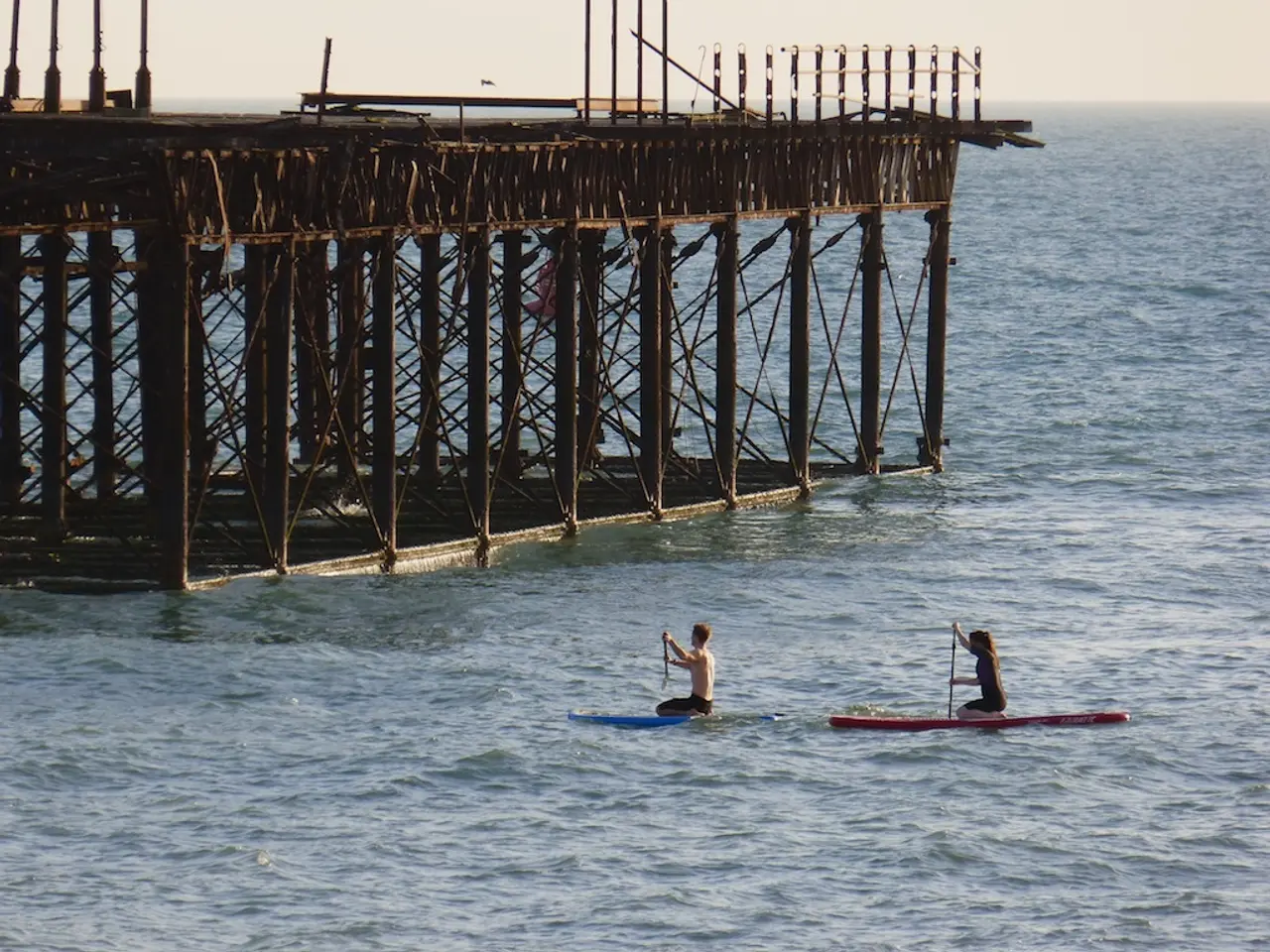A Landmark Project: The Sicily-Mainland Italy Suspension Bridge (2025-2032)
Connecting Two Regions, Building a Future
Approval of the bridge connecting Sicily to the Italian mainland expected in the year 2025
The Sicily-Mainland Italy suspension bridge, a monumental infrastructure project, is set to transform the landscape of Italy and the Mediterranean region. With an estimated completion date in 2032, the bridge promises to be the longest suspension bridge globally, spanning an impressive 3,600 metres.
Project Overview
The proposed bridge aims to bridge the Strait of Messina, connecting the island of Sicily to mainland Italy. This ambitious project is expected to significantly boost transportation and economic integration between the two regions.
Timeline (2025-2032)
- 2025: Final Planning and Approvals
- Completion of detailed engineering studies and environmental impact assessments.
- Securing necessary permits and final government approvals.
- Finalizing funding arrangements and contracts with construction firms.
- 2026-2028: Construction Phase 1 – Foundations and Towers
- Starting with seabed preparation and foundation laying for the bridge’s massive pylons.
- Construction of the main suspension towers on both Sicily and the mainland sides.
- 2029-2031: Construction Phase 2 – Suspended Span Installation
- Installation of the main cables and suspension system.
- Deck construction and assembly of the suspended roadway span.
- Late 2031 - Early 2032: Finalization and Testing
- Installation of ancillary infrastructure (roadways, safety systems, lighting).
- Comprehensive structural testing, load evaluation, and safety certifications.
- Mid 2032: Official Opening
- The bridge is inaugurated for public and commercial use.
Estimated Costs
- Initial Estimated Cost: Approximately €6 billion to €8 billion.
- Funding Sources:
- A combination of Italian government funds, European Union infrastructure grants, and private-public partnerships.
- Cost Drivers:
- Engineering complexity due to the deep and seismic-prone underwater environment of the Strait of Messina.
- High material and labor costs related to advanced suspension bridge technology.
- Contingencies:
- Project budgets include contingency funds to cover unforeseen geological or technical challenges.
Potential Impacts
- Economic Impact:
- Boost to local and regional economies through improved logistics and access.
- Enhanced trade, tourism, and business connectivity between Sicily and mainland Italy.
- Creation of thousands of jobs during construction and subsequent maintenance.
- Social Impact:
- Reduction in travel time and transportation costs.
- Increased opportunities for cultural exchange and regional integration.
- Potential population growth and urban development in connected areas.
- Environmental Impact:
- Concerns related to construction disturbance in a sensitive marine ecosystem.
- Extensive environmental mitigation plans to minimize habitat disruption.
- Potential reduction in ferry emissions by replacing some maritime traffic with road transport.
- Strategic and Political Impact:
- Strengthening national infrastructure and cohesion within Italy.
- Serves as a symbol of engineering prowess and innovation for the country.
A New Era of Connectivity
The Sicily-Mainland Italy suspension bridge is poised to revolutionize regional connectivity in Italy. With its anticipated completion in 2032, the bridge promises to bring Italy one step closer to a more integrated and prosperous future.
If you're interested, I can delve deeper into the engineering aspects of the bridge, provide updates on specific project phases, or discuss the community's sentiments towards the project.
- The final designs and contract documents for the bridge were approved by the Messina Strait company's board of directors on 29 July 2025.
- The bridge project aims to transform regional connectivity in Italy.
- Webuild, an Italian firm, will lead the construction of the bridge.
- Local communities express mixed sentiments about the bridge project, with some welcoming the economic boost and others wary of construction disruptions.
- The bridge is expected to significantly reduce travel times between Sicily and Italy, eliminating the need for ferries often delayed by poor weather.
- Environmental concerns regarding potential impacts on marine ecosystems remain under discussion.
- The Italian government has approved the construction of the bridge, with a commitment of €13.5 billion, on 7 August 2025.
- Over the centuries, proposals for a bridge connecting Italy and Sicily have been made, with a notable attempt in 2009 that was cancelled in 2013.
- Upon completion, the bridge is expected to boost tourism and commerce in the region.
- Webuild has stated that the committee's approval will allow for preliminary work to commence, including land expropriations, utility diversions, and geological surveys.
- The Sicily-Mainland Italy suspension bridge, a project in the tourism industry, is anticipated to revolutionize regional connectivity, boosting trade, tourism, and business connectivity between the two regions.
- With its eco-friendly approach, the bridge construction aims to minimize the environmental impact, addressing concerns related to potential impacts on marine ecosystems.
- Local communities express mixed sentiments about the bridge project, with some welcoming the economic boost and job creation while others are cautious about potential transportation disruptions.
- To finance this ambitious project, the Italian government, European Union infrastructure grants, and private-public partnerships are pooling their resources, ensuring a budget of approximately €6 billion to €8 billion.
- The construction of the bridge is set to commence in 2026, with Webuild, an Italian firm, leading the project, following the completion of final approval and agreements in 2025.
- During construction, the bridge is expected to reduce travel times between Sicily and the mainland, eliminating the need for ferries that are often delayed due to adverse weather conditions, and potentially offering more cost-effective transportation options for travelers and the local commuters.




